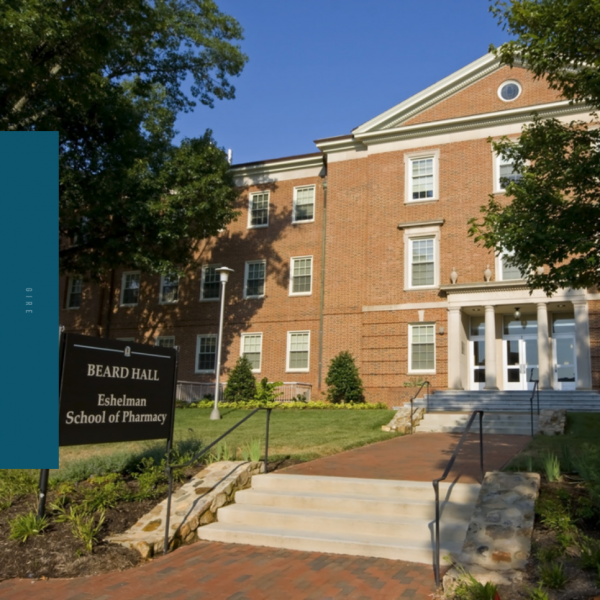|

Today, pharmacists play a crucial role in the healthcare industry, extending beyond dispensing medications to include responsibilities such as research and drug discovery. As of 2021, there are approximately 312,550 pharmacists employed in the U.S., with an average annual salary of $128,570. Given the significant responsibilities and high standards expected in the profession, obtaining top-tier education and training is paramount. However, with numerous schools offering pharmacy programs, selecting the right one can be challenging. Let's explore the journey of pursuing a pharmacy degree in the U.S. and the pharmacist licensure process.
Becoming a Pharmacist in the U.S.
Growing Demand for Pharmacists and Pharmacy Schools According to the 2023 U.S. News and World Report, which evaluated various factors such as growth potential, stress levels, salary, unemployment rates, and work-life balance, pharmacists were prominently featured. Software developers took the top spot, followed by nurse practitioners, medical and health services managers, and physician assistants. Notably, five out of the top ten jobs were in the healthcare sector. Pharmacists enjoy a low unemployment rate of 1.2%, with approximately 7,700 job openings available. The Bureau of Labor Statistics projects a 2.4% increase in pharmacist employment from 2021 to 2031.
Job Satisfaction Among U.S. Pharmacists Pharmacists typically work 40-hour weeks but may also work nights, weekends, and holidays. Many pharmacists report that their job involves significant multitasking. Here’s a look at the job satisfaction levels for pharmacists: - Upward Mobility: Moderate (Opportunities for advancement and salary increases) - Stress Level: Above Average (Work environment and responsibilities) - Flexibility: Below Average (Alternative working schedules and work-life balance)
Understanding the PCAT
The U.S. pharmacy program comprises a 6-year integrated course, including 2 years of Pre-Pharm (general undergraduate courses) and 4 years of Pharm.D. To enter the Pharm.D. program, students must take the Pharmacy College Admission Test (PCAT). The PCAT is a specialized exam designed to test the skills and abilities needed for success in pharmacy school. It consists of five sections: Writing, Biological Processes, Chemical Processes, Critical Reading, and Quantitative Reasoning. The average PCAT score is 400 with top pharmacy schools often preferring scores above this threshold.
While some schools require the PCAT, others do not, and there are options for direct entry into 6-year Pharm.D. programs, which require good GPA and TOEFL scores. After completing the pharmacy program, students can obtain pharmacist licensure by passing the NAPLEX and the MPJE exams, and they may secure internships in the U.S.
U.S. Pharmacy Schools Not Requiring PCAT (2022/2023) - Butler University, Indianapolis - Campbell University - Chicago University - Wilkes University - California North State University - Northeastern University - Oregon University - Florida A&M University - Pacific University Oregon - Ohio Northern University
U.S. Pharmacy Schools with Optional PCAT Submission (2022/2023) - Albany College of Pharmacy & Health Sciences, New York - American University of Health Sciences - Auburn University - Appalachian College of Pharmacy - Concordia University Wisconsin - Creighton University - Fairleigh Dickinson University - Drake University - High Point University - Harding University
Top U.S. Pharmacy Schools
University of North Carolina--Chapel Hill |
Ranked #1 by U.S. News, UNC offers Pharm.D., M.Sc., Ph.D., and postdoc programs
through the Eshelman School of Pharmacy. |
University of California--San Francisco |
UCSF’s School of Pharmacy has consistently been a top recipient of NIH research funding.
PCAT submission is optional but recommended for demonstrating academic preparation. |
University of Michigan--Ann Arbor |
Michigan pharmacy school offers a range of programs including Pharm.D., Ph.D., and integrated degrees.
PCAT is not required, but may strengthen applications for those with lower GPAs or older coursework. |
University of Minnesota |
Minnesota offers innovative programs aimed at improving health through education and research.
PCAT is not required for recent applications. |
University of Florida | Ranked #5 in the U.S., Florida’s College of Pharmacy offers Pharm.D., Ph.D., and M.S. programs.
PCAT is not required, but scores can be submitted to bolster applications with lower GPAs or older coursework. | University of Kentucky | Known for its bold and innovative approach, Kentucky offers a 4-year Pharm.D. program,
along with graduate and residency programs. PCAT is not required. | Ohio State University | Ohio State’s College of Pharmacy offers a wide range of programs, including Pharm.D., M.Sc., Ph.D.,
and professional development programs. PCAT is optional, particularly for students with lower science GPAs. |
Choosing the right pharmacy school is a critical step toward a successful career in pharmacy. Understanding the requirements, such as the PCAT, and considering factors like job satisfaction and demand can help guide your decision. Whether you aim to work in the U.S., Korea, or elsewhere, planning ahead and selecting a reputable program will set you on the path to success. |
 Click here to book
Click here to book